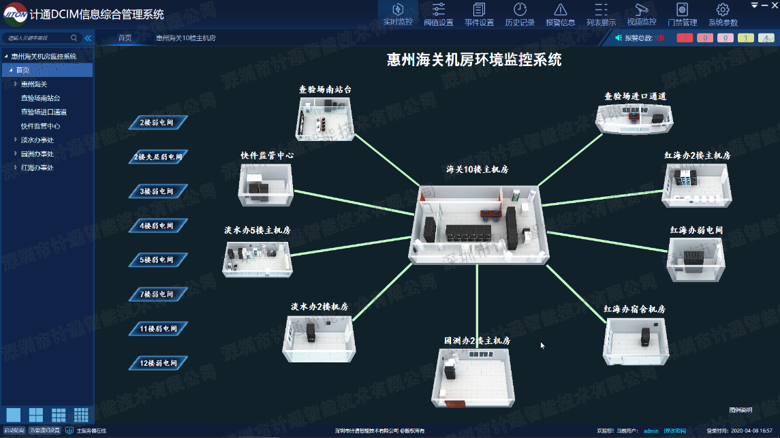
Project Background
The predecessor of Shenzhen Customs of the People's Republic of China was "Jiulong Customs." On July 1, 1997, it was officially renamed "Shenzhen Customs." The agency currently consists of 21 internal departments, 32 subordinate customs offices, 10 affiliated public institutions, and 1 public institution under the entrusted management of the General Administration of Customs.
Monitoring Scope: Huizhou Customs (20 data rooms), Longgang Customs (8 weak-current rooms), Shawan Customs, Buji Customs (2 data rooms), Tongle Customs, Nantou Customs, 2nd floor data room at Heping Road Junction, Pingshan Customs, Sungang Customs (5th and 6th floor data rooms), Tongle Customs, Wenjindu Customs (22 data rooms), Shatoujiao Customs (6 data rooms), Shenzhen Bay Customs (10 data rooms), General Administration Building (B2 new power room), Dachan Bay data room, Shekou data room, West Kowloon Customs, CIQ Building data room, Airport data room, Health Center data room, Futian Port data room, Futian Bonded Zone data room, Luohu Bureau data room, Yantian Bureau data room, Yantian Bonded Zone data room, Longgang data room.
Solution
To address the challenges of widely distributed branches and complex operation and maintenance management, a comprehensive centralized monitoring system was built to achieve unified platform management of Shenzhen Customs’ power and environmental infrastructure.
Monitoring Targets: Power distribution cabinets, UPS, PDU cabinets, power switches, temperature and humidity, water leakage, precision air conditioning, liquid level sensors, fire protection, access control, infrared sensors, and video surveillance.
Application Value
Adopting a distributed-centralized monitoring approach, the Shenzhen Customs central platform enables unified management of data rooms across all city regions and Shenzhen Customs sites through a single platform.
The system supports multiple alarm methods for abnormal data, reducing the time required to identify issues and enhancing fault resolution capabilities.
















